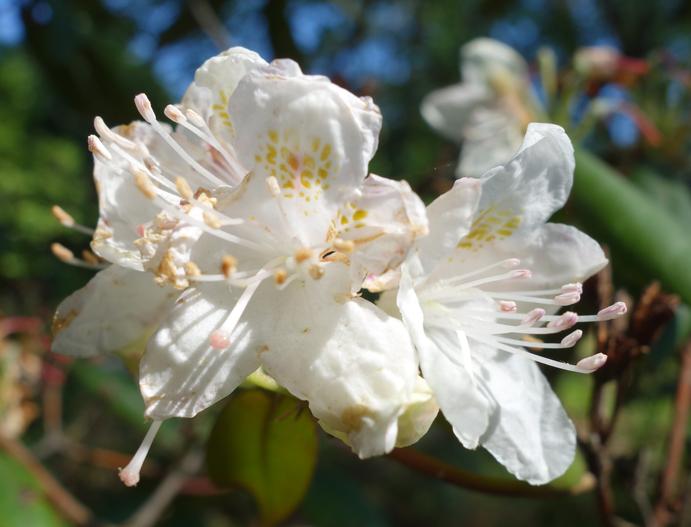Piedmont Rhododendron
(Rhododendron minus)
Piedmont Rhododendron (Rhododendron minus)
/
/

Daderot
CC0
Image By:
Daderot
Recorded By:
Copyright:
CC0
Copyright Notice:
Photo by: Daderot | License Type: CC0 | License URL: http://creativecommons.org/publicdomain/zero/1.0/deed.en | Uploader: Daderot | Publisher: Wikipedia Commons




















Estimated Native Range
Summary
Rhododendron minus, commonly known as Piedmont Rhododendron, is a deciduous to semi-evergreen shrub native to the southeastern United States, particularly found in the Appalachian Mountains. It typically grows to a height and width of 3-6 feet (0.9-1.8 meters). The Piedmont Rhododendron has a compact, rounded form with dark green, leathery leaves that may remain on the plant through mild winters. Its flowers, which bloom in late spring to early summer, range from white to pale pink, often with a splash of yellow or green in the throat, and are quite showy, attracting pollinators such as bees and butterflies.
This shrub is valued for its attractive flowers and its ability to thrive in shaded conditions, making it a popular choice for woodland gardens, shaded borders, and naturalized areas. It is also used for its resistance to pests and diseases, which makes it a low-maintenance option for gardeners. Piedmont Rhododendron prefers acidic, well-drained soils and requires consistent moisture without waterlogging. It is tolerant of part shade to full shade and benefits from protection from harsh afternoon sun. While generally disease-resistant, it can be susceptible to root rot if planted in poorly drained soils and may suffer from leaf spot or powdery mildew. It is important to avoid overhead watering to minimize these risks.CC BY-SA 4.0
This shrub is valued for its attractive flowers and its ability to thrive in shaded conditions, making it a popular choice for woodland gardens, shaded borders, and naturalized areas. It is also used for its resistance to pests and diseases, which makes it a low-maintenance option for gardeners. Piedmont Rhododendron prefers acidic, well-drained soils and requires consistent moisture without waterlogging. It is tolerant of part shade to full shade and benefits from protection from harsh afternoon sun. While generally disease-resistant, it can be susceptible to root rot if planted in poorly drained soils and may suffer from leaf spot or powdery mildew. It is important to avoid overhead watering to minimize these risks.CC BY-SA 4.0
Plant Description
- Plant Type: Shrub
- Height: 3-6 feet
- Width: 3-6 feet
- Growth Rate: Slow
- Flower Color: Pink, White
- Flowering Season: Summer
- Leaf Retention: Evergreen
Growth Requirements
- Sun: Part Shade, Full Shade
- Water: Medium
- Drainage: Medium
Common Uses
Bee Garden, Bird Garden, Border Plant, Butterfly Garden, Fragrant, Hedges, Hummingbird Garden, Low Maintenance, Rabbit Resistant, Showy Flowers
Natural Habitat
Native to the Appalachian Mountains within the southeastern United States, particularly thriving in shaded, well-drained acidic soils
Other Names
Common Names: Amerikansk Alpros
Scientific Names: , Rhododendron minus, Rhododendron punctatum, Rhododendron parviflorum, Rhododendron cuthbertii, Rhododendron minus f. harbisonii, Rhododendron carolinianum f. luteum, Azalea minor,
GBIF Accepted Name: Rhododendron minus Michx.